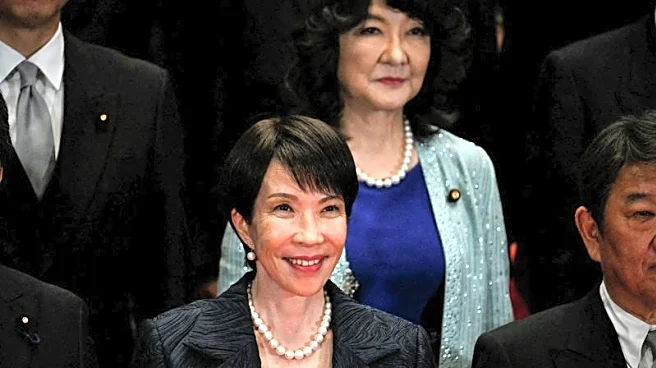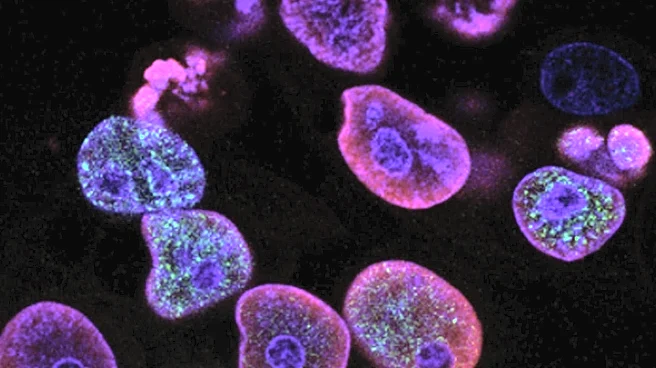What's Happening?
A study conducted by the University of Tokyo has revealed a potential link between hair graying and a natural defense against cancer. Researchers investigated how melanocyte stem cells (McSCs), responsible
for hair and skin pigmentation, react to DNA damage. They found that McSCs undergo a process called seno-differentiation in response to DNA double-strand breaks, leading to hair graying. This process involves the permanent differentiation and loss of McSCs, which may protect against melanoma, a form of skin cancer. The study suggests that graying hair could be a result of stem cell stress responses, where McSCs either differentiate and leave the system or continue dividing, potentially leading to tumor formation.
Why It's Important?
The findings of this study offer new insights into the biological processes underlying hair graying and its potential role in cancer prevention. Understanding the mechanisms of seno-differentiation could lead to advancements in cancer research, particularly in developing strategies to protect against melanoma. This research also challenges the perception of graying hair as merely a cosmetic concern, highlighting its possible significance in health and disease prevention. The study underscores the importance of stem cell research in uncovering the complex interactions between aging, DNA damage, and cancer risk.
Beyond the Headlines
The study's implications extend beyond the immediate findings, suggesting a broader connection between aging processes and cancer defense mechanisms. It raises questions about how other age-related changes might serve protective roles against diseases. Additionally, the research highlights the potential for stem cell therapies in treating or preventing cancer, as understanding the pathways involved in seno-differentiation could inform new approaches to managing stem cell behavior in the body.












